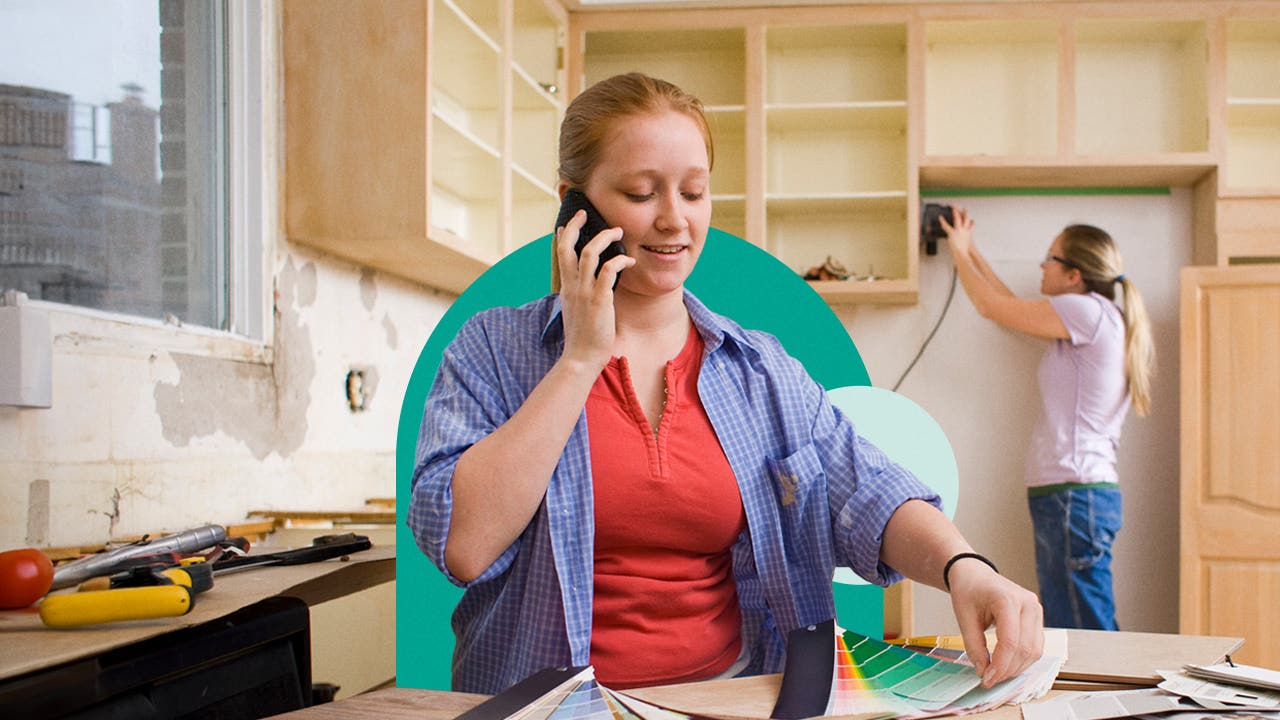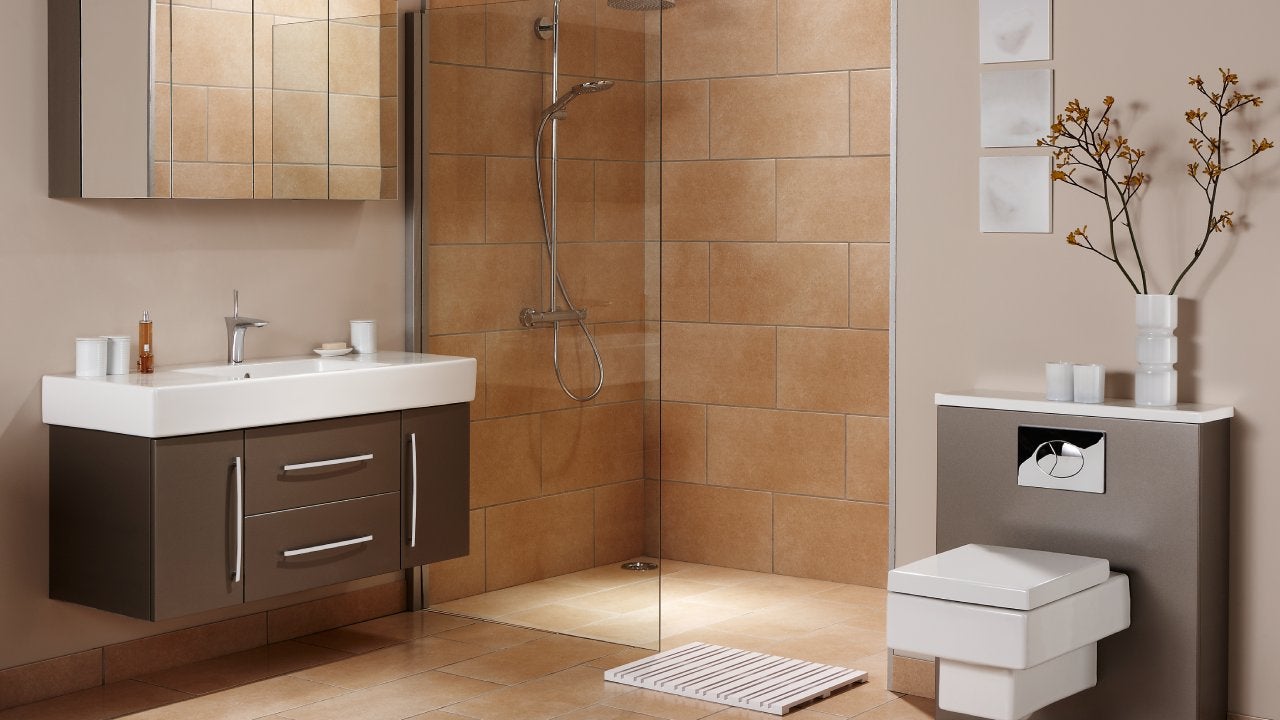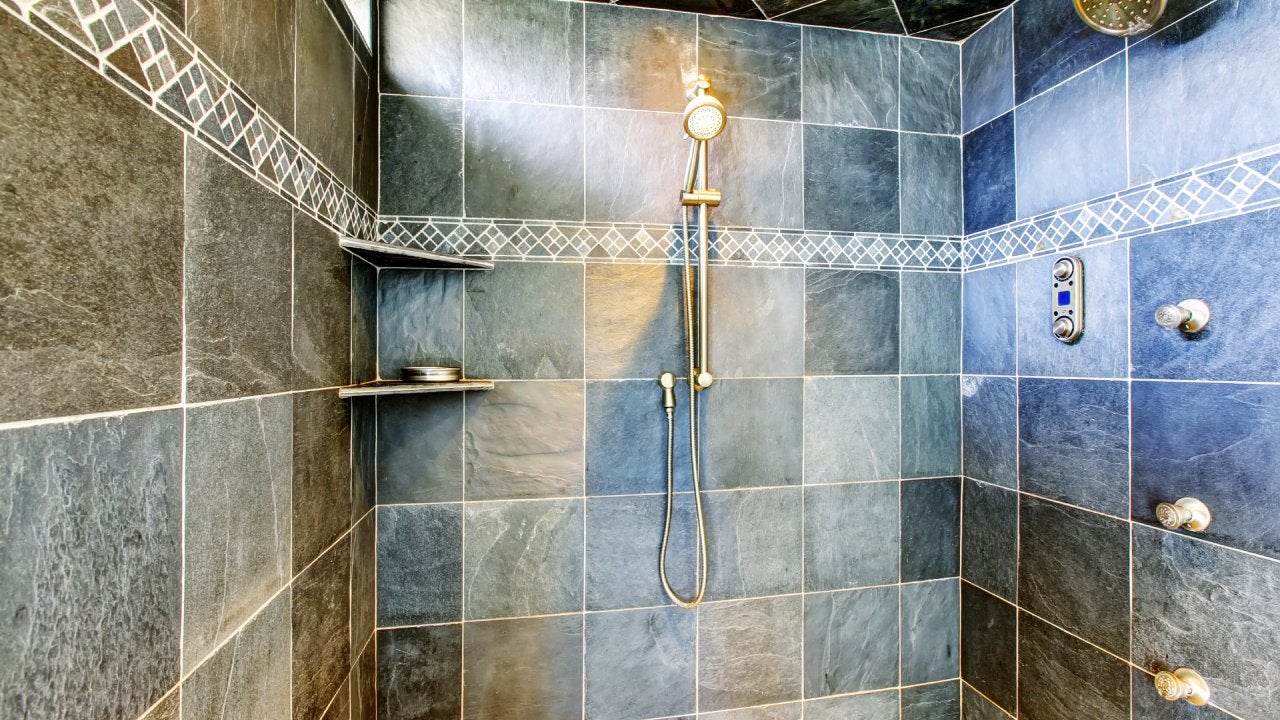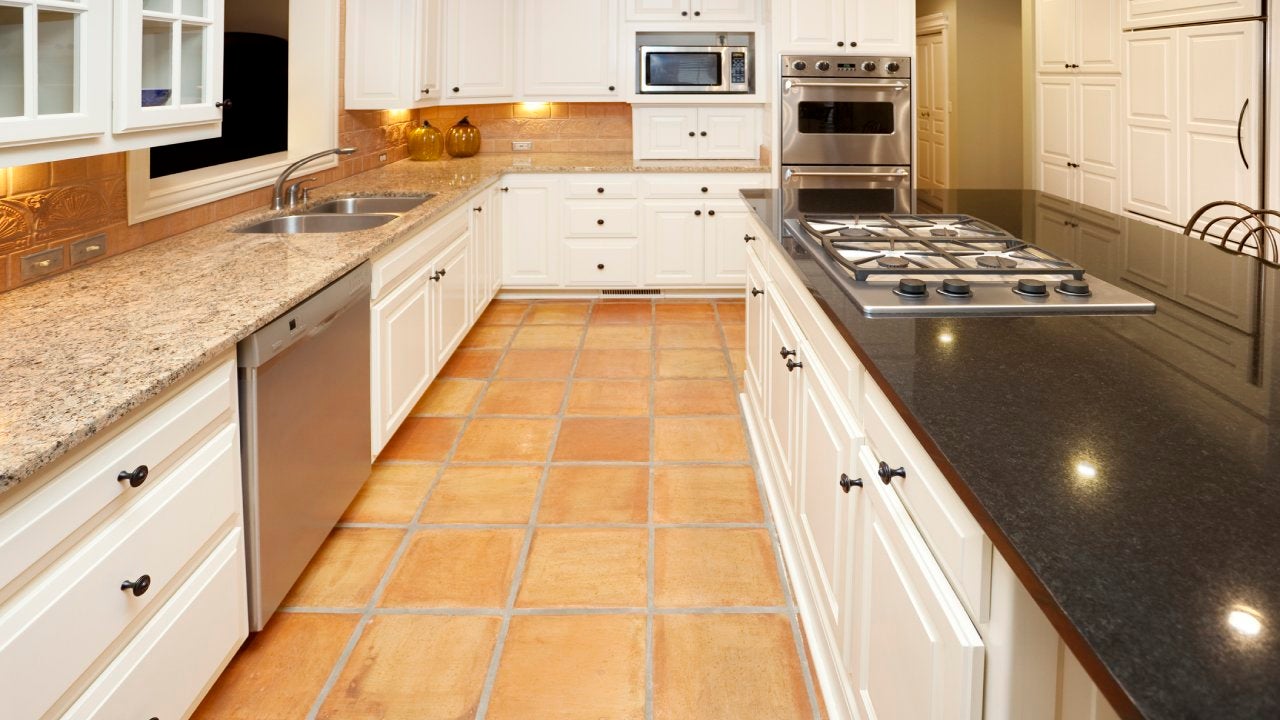What does it cost to remodel a kitchen?




Key takeaways
- A kitchen remodel runs $14,608 to $41,275, on average: Minor jobs can cost as little as $10,000 and major ones can mount to $100,000.
- Few projects command as big a price tag as a kitchen renovation, but it can add significant resale value to your home.
- Home equity loans/HELOCs, personal loans and renovation loans are all ways to finance your kitchen remodel.
The kitchen is the heart of the home, it’s often said. So, no surprise that when it comes to remodeling projects, few are as popular as a kitchen re-do. Not only is a snazzy, state-of-the-art kitchen something that residents dream of, it’s often a top priority for prospective buyers too.
Unfortunately, popularity comes at a cost. Remodeling a kitchen involves expensive, labor-intensive components like cabinets and countertops; there’s also an array of expensive appliances to replace, and services from a variety of contractors.
In fact, simply redoing the average-sized kitchen (depending on the type of work and upgrades) typically runs between $14,608 to $41,275, according to Angi, the contractor reference site; the average cost is around $26,700. But the range is huge. Major renovations, involving large spaces and layout rearrangements, can mount into the six figures, and even a minor kitchen remodel could cost between $10,000 and $20,000.
If you are willing to deal with the hassle and high cost of redoing your kitchen, however, you may find that in the long run it enhances the value of your home, improving its marketability at selling time.
How much is a kitchen remodel?
Few projects command as big a price tag as a kitchen renovation: Count on five figures at least, according to HomeAdvisor. Of course, your geographic location impacts how much you pay. If you live in the South, you are likely to spend up to $20,000 less on a kitchen remodel than residents of the West or Northeast. Another factor is the type of community you live in: City-dwellers often pay more for a remodel than people in rural areas.
Obviously, the size of your kitchen and its components also affects the cost of a makeover project. However, the scope of your kitchen re-do also influences your price.
Types of kitchen remodels
Generally, kitchen remodels are classified in three ways:
- Minor/Small: keeping the kitchen layout and major features, but adjusting details and refreshing: painting walls, refacing cabinets, a new backsplash, converting to energy-efficient appliances. If it’s all small, superficial work, you could do it for under $10,000. For slightly more substantial work (replacing floor, more appliances), you may be able to get away with $10,000 to $20,000 on a small kitchen upgrade.
- Midrange: involves adding design elements like a kitchen island, installing custom cabinetry and changing the flooring and lighting. The average cost of a midrange remodel ranges between $20,000–$70,000.
- Major/upscale: a gut renovation or substantial change to the footprint. Virtually everything new or replaced, and often featuring super-quality and specialty items — top-of-the-line appliances, built-in water-filtration systems, completely customized cabinets and countertops, designer fixtures — all made with the most luxurious materials. Major remodels often run around $70,000–$100,000; if high-end materials are used all the way, the cost can easily rise to $130,000.
More specifically, here’s how the different costs play out, depending on the scope of your kitchen makeover.
| Feature | Minor remodel $5,000 to $10,000 |
Small remodel $10,000 to $20,000 |
Midrange remodel $20,000 to $70,000 |
Major remodel/complete reno $70,000 to $100,000 |
|---|---|---|---|---|
| Source: HomeAdvisor | ||||
| Cabinets | $2,250 | $4,500 | $13,500 | $30,000 |
| Additional materials | $1,875 | $3,750 | $11,200 | $25,000 |
| Design & Labor | $1,500 | $3,000 | $9,000 | $20,000 |
| Appliances | $1,125 | $2,250 | $6,750 | $15,000 |
| Countertops & Backsplashes | $750 | $1,500 | $4,500 | $10,000 |
What costs the most in a kitchen remodel?
While there’s plenty to spend money on in a kitchen makeover, five key components make up the biggest percentage of the budget. Per Angi’s and HomeAdvisor’s latest stats, they include:
Cabinetry
Installing cabinets and their hardware make up the lion’s share of expenses at 30 percent. The average cost hovers around $1,860 to $9,430 and depends on the actual stock and refacing and refinishing costs.
Appliances and ventilation
Depending on the number and type of appliances and ventilation upgrades you plan on doing during your kitchen remodel, you could be looking at spending anywhere from $1,000 to $10,000 on custom built-in appliances or $200 to $1,000 for economy freestanding units. The average cost of putting in a gas line (for a new stove) is $270 to $880. Overall, appliances will take up 15 percent of the entire cost of your kitchen remodel.
Countertops
The cost of countertops typically takes up 10 percent of a kitchen remodel and is generally the fourth largest expense. Installing a countertop can cost between $1,860 and $4,340, according to HomeAdvisor. The actual cost of the countertop depends on the materials you use. For example, granite (a popular choice) will cost on average between $2,250 and $4,500, and laminate, usually a cheaper option, costs between $790 and $1,630 on average.
Installation
Labor is a definite factor in the kitchen remodel’s price tag. Installing all the appliances and elements of your renovated kitchen — from the faucets to the floor — make up 18 percent of the cost of the average kitchen remodel. The average price tag to install is $5,400 based on a $30,000 budget.
33%
How to save money redoing a kitchen
There are plenty of ways to make a kitchen remodel more affordable. Here are a few tips:
- Choose stock items: Purchasing ready-made/standard models instead of customizing your cabinets and countertops can save thousands of dollars.
- Do it yourself: Try DIY-ing your renovations as much as possible. But, if you are going the DIY route, learn how to do it properly, suggests Will Lau, a realtor based in Southern California and CEO and founder of Will & Way Homes. “If you don’t, it won’t look as good, and it will bring down the value since future buyers will now have to factor in costs to fix it themselves,” says Lau.
- Upgrade the details: Opting to replace small things — like the cabinet and drawer hardware instead of the entire cabinet — can make a dramatic difference appearance-wise, at a fraction of the cost.
- Keep existing piping and plumbing: Rewiring and rerunning lines kicks a project into the major leagues, both in terms of cost and time. Not moving or changing any of the existing water, gas or electric offers a substantial savings.
How to know if you should remodel your kitchen
You may not be sure if remodeling your kitchen is the right thing to do. Consider the following to help you decide:
- Funds: Do you have enough funds in your account for a kitchen remodel? Would you have to dip into your rainy day fund? If so, Lau recommends waiting until you’ve saved a bit more before doing any renovation — unless you want to try financing the project (see below).
- Living plans: If you just bought your home and plan on living there for at least seven years, Lau recommends remodeling before you move in. “That way, you can get all done and not have to figure out the logistical nightmare of doing a renovation while living on the property,” says Lau. “Even if you go on vacation and try to get it done, then you’ll have to factor in having someone supervise the job to answer any questions or to make sure everything is on track.”
- Selling: If you renovate early on, and the job is done correctly and well, you’ll not only retain the value spent, but you’ll also get a boost in ROI, explains Lau. “Most buyers want to purchase a home that is move-in ready and remodeled,” he says. If you’re thinking about selling and all the neighboring homes have updated kitchens, you definitely might want to consider remodeling. “The kitchen and master bedroom and bathrooms are the most desired spaces for most buyers on the market,” he adds.
How to pay for a kitchen remodel
Clearly, it costs a lot to redo a kitchen — even a relatively minor remodel. If you don’t have the cash (or even if you do), you may want to consider financing the project. Your best options include
Personal loans
Personal loans, aka home improvement loans, let you borrow a lump sum with a fixed interest rate for a specified term. You’ll have a fixed monthly payment as a result, making it easier to budget the expense. Personal loans are also unsecured. This means you don’t have to use your home as collateral and put your home at risk of foreclosure if you fall behind on your payments.
A personal loan may work best if you don’t want to borrow against your home’s value or don’t have sufficient equity built up. It could also be a strong fit if you have good or excellent credit and the ability to qualify for the best rates and terms. Keep in mind, however, that — depending on your financials — you might not be able to borrow a sufficient sum, and you’ll have a fairly short repayment period.
Some banks and credit unions also offer home improvement loans. These loans have similar terms as personal ones, but they may offer larger sums.
Home equity loan
A home equity loan also comes with a fixed interest rate, a fixed repayment timeline and a fixed monthly payment. However, unlike a personal loan, it uses your home as collateral. You’ll receive a lump sum to spend on your kitchen remodeling project. To qualify, you’ll need a strong credit score, low debt-to-income ratio, and at least 15-20 percent equity in your home.
A home equity loan could be a good idea if you want to borrow for a larger amount (and on better terms) than a personal loan offers, you have some equity in your home, and if you feel comfortable with a secured loan. You may also qualify for a tax deduction on the interest since the loan’s being used to improve your home’s value.
Home equity line of credit (HELOC)
Similar to a credit card, a home equity line of credit (HELOC) is a revolving line of credit with a set limit: You can borrow as much as you need, repay it, and then borrow again. And as with a home equity loan, you’re using the equity on your home as collateral, and your credit line will be based on that.
If you’re not sure exactly how much you need for your kitchen remodel, this could be a good choice for you. HELOCs come with closing fees and variable interest rates, though, so read the fine print to figure out what your monthly payments are and how they could change.
Home renovation loan
Home renovation loans are another option, especially if your project is a major one, and/or is part of a gut overhaul of your home. Home renovation loans are usually taken out (and underwritten) to fund large projects. If your kitchen renovation project will significantly improve the value of your property, a home renovation loan could be for you.
If you qualify you could take out one of two FHA 203(k) loans, which allow you to purchase a home (usually a fixer-upper) and pay for repairs and remodels simultaneously. The Limited 203(k) loans are capped at $35,000, which may not be enough for a kitchen overhaul. The Standard 203(k) allows you to borrow more money but carries more requirements and paperwork.
A Fannie Mae HomeStyle Renovation loan is a similar all-in-one home purchase/home improvement product. You can also refinance your current mortgage with one. If you use this loan, you will simply pay one amount each month for your mortgage and the cash you borrow for the remodeling project.
Does a kitchen remodel add home value?
A new kitchen adds value to your home life. But does it add value to your home?
In terms of return on investment (ROI) — that is, recouping its costs — a kitchen remodel is better than some projects, worse than others. According to Remodeling’s 2023 Cost vs Value Report, a minor to midrange remodel recoups 86 percent of its outlay; a major remodel, 42 percent; and a major upscale remodel, 32 percent. It may seem counterintuitive, but spending a lot can yield diminishing returns. That’s because buyers care more about the kitchen being modern, well-equipped and functional and less about luxe extras, fancy finishes and restaurant-quality appliances (most of the time, that is; one exception might be if you’re in a highly competitive luxury market where such details do matter).
That said, the state of the kitchen can be a strong selling point. The National Association of Realtors’ 2022 Remodeling Impact Report found that kitchen renovations and kitchen upgrades rank among the top interior projects that add resale value to homes and appeal to potential buyers. Nearly one-third of Realtors recommend that homeowners do an upgrade at least before selling.
Next steps for your kitchen remodel
If you’re ready to roll up your sleeves, here’s what you’ll need to do for your kitchen re-do:
- Engage in homework: Research materials and contractors in your area. You’ll want to know the costs and parts of each step of your project. Don’t forget to budget for other costs, like eating out or storing furniture and big appliances (if you’re keeping them) while your kitchen is being remodeled.
- Get an estimate: Get several estimates — at least two to three bids — from local contractors to get a better idea of how much you will need to spend on the renovation.
- Look into financing: If you’ve decided to finance your kitchen makeover, gather the information and financial documents you need to apply. Be sure to shop around, looking at at least three lenders. Then, review the loan amounts, rates and terms offered.
You may also like


How much does it cost to add a bathroom to your home?

How much does it cost to remodel a shower?

How much do kitchen countertops cost?

